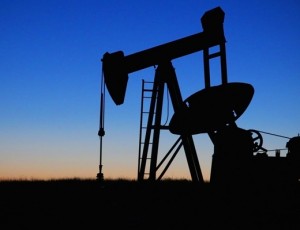September 06, 2019
 In a startling admission, the National Iranian Oil Com-pany (NIOC) has announced that it can only recover two-thirds as much crude oil from Iran’s oilfields as the world average.
In a startling admission, the National Iranian Oil Com-pany (NIOC) has announced that it can only recover two-thirds as much crude oil from Iran’s oilfields as the world average.
“The average rate of recovery from Iran’s oilfields is around 20 percent. That is at least 10 percentage points less than global standards,” said Karim Zobeidi, the head of the NIOC department that oversees Iran’s oil reservoirs, according to the NIOC news website.
He said the recovery rate varies among oilfields, ranging from a high of 25 percent in the Aghajari oilfield in Khuzestan province and the Gachsaran oilfield in Kohgiluyeh va Boyer-Ahmad province down to 15 percent in the Ahvaz oilfield in Khuzestan. But even the best recovery rate in Iran is well below the global average.
However, some newer oilfields may see even less crude recovered. He cited the giant Azadegan oilfield in Khuzestan near the Iraqi border. Zobeidi said the recovery rate there is a mere 5 percent at present because plans to develop the reservoir, which included employing enhanced oil recovery (EOR) and improved oil recovery (IOR) techniques, have failed. He blamed that largely on procrastination by the Chinese contractor chosen to develop the field.
Zobeidi is of the opinion that big new fields are increasingly unlikely to be found and thus broader employment of EOR should be among the NIOC’s top priorities. EOR involves pumping water, gas or some other substance into an oilfield to increase the pressure and force out more crude.
Zobeidi’s remarks suggest a need to work with the international oil giants that have technology unavailable to the NIOC and its Iranian contractors. But they are gone from Iran because of their adherence to US sanctions. Yet even when there were no sanctions driving the international oil giants away, few major firms were willing to work in Iran because they found its contract model unattractive.
The NIOC acknowledged that after two decades and has been trying to develop a new and more appealing contract model. But hardliners who fear that Iran will be taken advantage of by foreigners have prevented that from being adopted.
The international oil giants were driven out of Iran after the 1979 revolution. President Rafsanjani changed that policy and opened Iran’s oilfields to foreign bidders in 1995. Some came into Iran, but soon complained about the buy-back contract model they were forced to adhere to. Even Total of France, the company friendliest to the Islamic Republic, eventually said it would not bid on any more contracts in Iran until the contract system was changed.
Zubeidi said every 1 percentage point improvement in the recovery rate would add seven billion barrels to Iran’s eventual production—in other words, extending Iran’s oil production lifetime by 5 years, assuming the rate of production before the latest sanctions. That would mean that if Iran reached the global average of recovery, it would be able to pump oil for an additional half century.






















